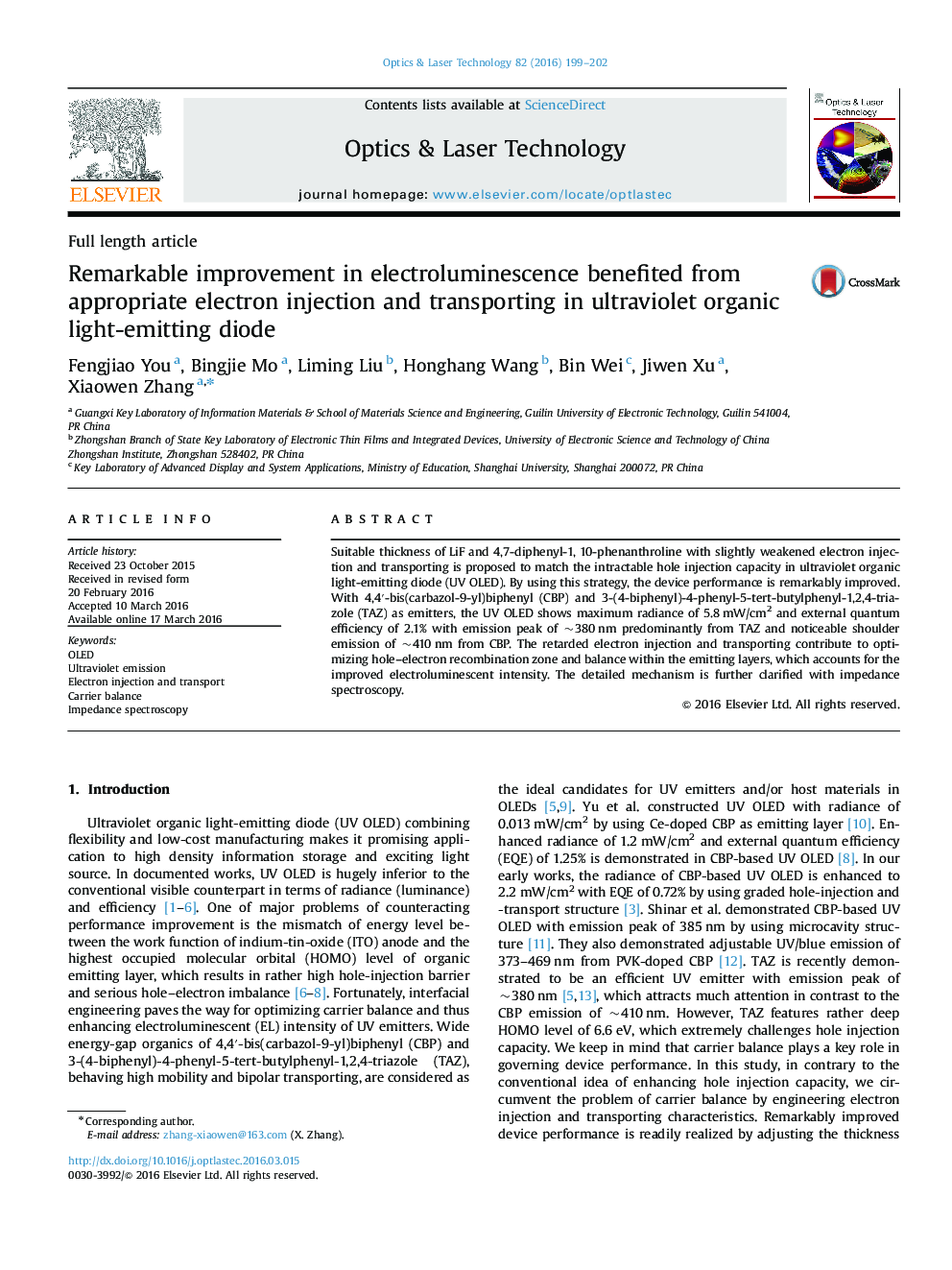| Article ID | Journal | Published Year | Pages | File Type |
|---|---|---|---|---|
| 733389 | Optics & Laser Technology | 2016 | 4 Pages |
•Highly efficient ultraviolet OLED is demonstrated by tuning electron injection and transporting characteristics.•The ultraviolet OLED shows radiance of 5.8 mW/cm2 and external quantum efficiency of 2.1%.•Impedance spectroscopy is used to clarify the mechanism of electron injection.
Suitable thickness of LiF and 4,7-diphenyl-1, 10-phenanthroline with slightly weakened electron injection and transporting is proposed to match the intractable hole injection capacity in ultraviolet organic light-emitting diode (UV OLED). By using this strategy, the device performance is remarkably improved. With 4,4′-bis(carbazol-9-yl)biphenyl (CBP) and 3-(4-biphenyl)-4-phenyl-5-tert-butylphenyl-1,2,4-triazole (TAZ) as emitters, the UV OLED shows maximum radiance of 5.8 mW/cm2 and external quantum efficiency of 2.1% with emission peak of ~380 nm predominantly from TAZ and noticeable shoulder emission of ~410 nm from CBP. The retarded electron injection and transporting contribute to optimizing hole–electron recombination zone and balance within the emitting layers, which accounts for the improved electroluminescent intensity. The detailed mechanism is further clarified with impedance spectroscopy.
